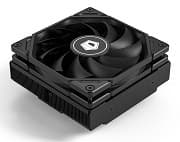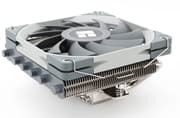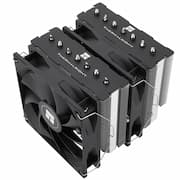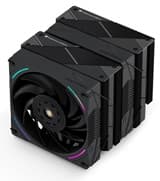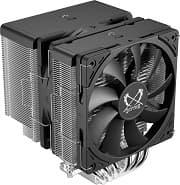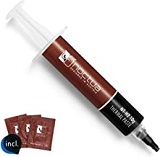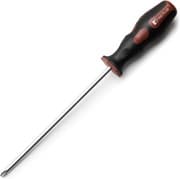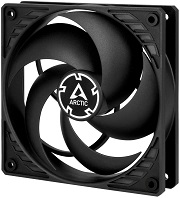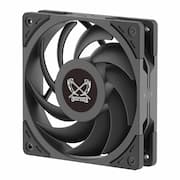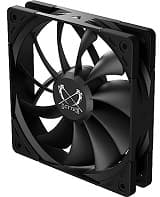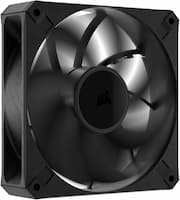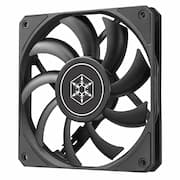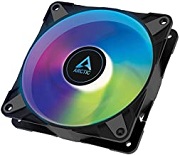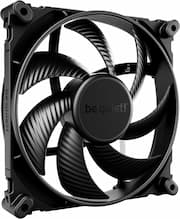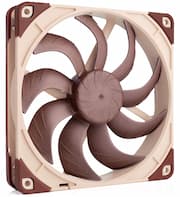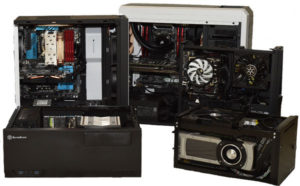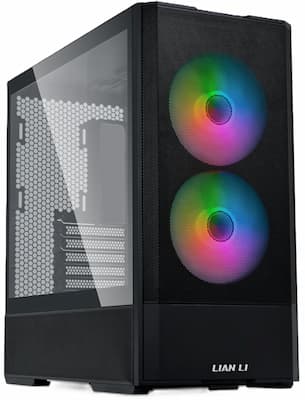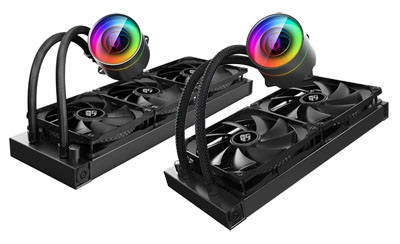The Best CPU Cooler and Fan Buyer’s Guide – Winter 2025
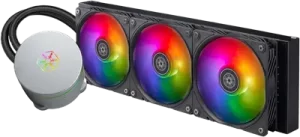 Note: this guide is no longer being updated.
Note: this guide is no longer being updated.
The Best PC Cooling Advice, Based on Years of Testing!
One of the most cost effective and easiest modifications you can make to improve your PC’s performance is to upgrade its cooling. This guide lists our favorite coolers at every pricepoint, including two low-profile coolers, three towers, and three liquid models. But we didn’t stop there! We also list our favorite thermal paste and the eight best fans on the market, with specific recommendations for cases and coolers.
And take note: performance of coolers has dramatically improved over the past few years, to the point where even a budget tower cooler will outperform the top-end coolers from a generation ago, making an upgrade a great idea if you’ve been holding onto a cooler for maybe a bit too long!
Our Tips on Choosing a CPU Cooler
Feel free to jump to the recommended coolers in this guide, but if you need a bit more background on where specific types of coolers are warranted, here are a few suggestions we’ve put together based on all of our testing:
- Air Cooler Styles: Tower-style coolers will always outperform equivalent downdraft coolers of the same price. We only recommend downdraft coolers where neither towers nor liquid coolers will fit.
- Air Cooler Sizes: Among tower coolers, 140mm-class towers will generally outperform 120mm-class models. With that said, the latest 120mm coolers are better than ever, and have far fewer requirements when it comes to motherboard and case clearance. The industry standard for cooler clearance is right around 160mm, which limits you to 120mm-class coolers, and many 140mm-class coolers also block RAM or expansion slots (although the recommendation in our guide does not!). Plus, when it comes down to it, a 140mm cooler will almost always be outclassed by liquid coolers at the same pricepoint, so we’ve stopped recommending them.
- Air vs. Liquid: Liquid coolers have two distinct applications where they excel. First, we recommend using 240mm models to provide excellent cooling where a good tower cooler won’t fit (meaning in mini-ITX or slim mATX and ATX systems). Second, higher-powered models with large 360mm radiators will exceed the performance of any air cooler. They bend the rules by exhausting hot air outside of the case, thereby hitting performance levels that aren’t possible with air coolers.
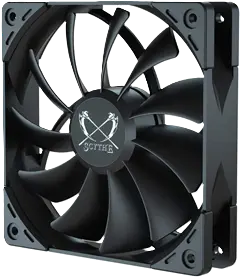 Our Tips on Choosing Case and Cooler Fans
Our Tips on Choosing Case and Cooler Fans
Surprisingly, choosing a fan can be even trickier than choosing a cooler, in part because there is so much misinformation out there, starting with the specs provided by manufacturers. So here are our tips on how to sort through the chatter:
- The Bearings: The quality of the fan bearings has a lot to do with the overall user experience; standard sleeve or rifle bearings always sound rougher than fluid dynamic (or “hydraulic”) bearings.
- The Size: As with coolers, bigger typically is better. 140mm fans are almost guaranteed to provide more cooling at the same noise levels than 120mm fans, but there are exceptions. We’ve performed the most in-depth case cooling optimization analysis on the ‘net to show you why! More importantly, they fit in far fewer applications, so 120mm fans remain our primary recommendation.
- The Style: A fan is about far more than the airflow and static pressure metrics in marketing materials. People who rely on these specs to choose fans are fooling themselves, as is anyone who believes all a fan needs to do is move air. Fans can move air in very distinct ways: some are highly directional, moving air over long distances when unobstructed, others are short-distance specialists, with the power to push through tightly-packed fins or mesh. Our extensive real-world testing allows us to provide recommendations tailored to your specific needs!
Final Thoughts
Unlike a lot of other categories of PC components, CPU coolers and fans can be used in multiple systems over time, making them a very good place to invest in the best you can afford! If you decide to purchase one of the options listed below, please use the Amazon product links we provide, which helps support further development of this guide!
Coolers
-
Low-Profile CPU Cooler –
ID-Cooling IS-47XT
$35The Guru’s TipIf you need a cooler that has the same 47mm height and compact footprint as the stock Intel box cooler, look no further than the IS-47XT. It offers a big uplift in performance, much lower noise, and tremendous value per dollar.Unlike many low-profile coolers, this one is designed to work with both Intel and AMD systems.
-
Low-Profile CPU Cooler –
Thermalright AXP120-X67
$30The Guru’s TipThe excellent low-profile cooler provides a huge upgrade versus most other low-profile coolers, and does so at any amazing price. The slim 15mm-thick fan uses fluid dynamic bearings, unusual in this class and a critical piece of the puzzle when it comes to eliminating noise. It’s also one of the very few high-performance low-profile coolers that can be mounted so it does not obstruct the RAM slots, although it does offer enough clearance for standard low-profile RAM. The entire heatsink/fan assembly sits at 67mm tall.Many other low-profile coolers that utilize 120mm fans cause significant clearance issues with RAM or other components in the case. This one is offset to avoid these issues.
-
CPU Cooler –
Thermalright Phantom Spirit 120SE Black
$35The Guru’s TipThermalright is legendary in the CPU cooler business, having designed some of the very first premium tower coolers in the early 2000s. Their focus has always been on performance per dollar, providing a lot of metal for your money. And with the Phantom Spirit 120SE, that metal comes in the form of 7 chunky 6mm heatpipes, which you won’t find on any other cooler at this pricepoint. Also included are two large towers and two 120mm fans. All in all, you get class-leading performance at a price that no other manufacturer can touch!If you're looking to cool a moderately-hot processor, there's simply no reason to spend more on a cooler!
-
CPU Cooler –
Thermalright Phantom Spirit 120 EVO
$53The Guru’s TipThermalright is legendary in the CPU cooler business, having designed some of the very first premium tower coolers in the early 2000s. Their focus has always been on performance per dollar, providing a lot of metal for your money. And with the Phantom Spirit 120 Evo, that metal comes in the form of seven chunky 6mm heatpipes running through two big heatsink towers. They are aided by two ultra-premium 120mm fans using fluid dynamic bearings and a proven 9-blade design. All in all, you get class-leading performance at a price that no other manufacturer can touch!The one thing to keep in mind with this incredible cooler is that it works best with low-profile RAM. Big RGB-lit RAM modules will require the front fan to be lifted considerably, reducing performance and increasing space requirements inside the case.
-
CPU Cooler –
Scythe Fuma 3
$40The Guru’s TipWith the Fuma 3, the best gets better, and amazingly enough, cheaper too! Perhaps the most innovative of all 120mm tower designs, the third incarnation of the Fuma returns to its roots, coming in at a price very similar to the original Fuma, but with far greater performance, better looks, and the best compatibility of any high-performance cooler. Thanks to its offset design, it’s just 154mm tall, and completely clears the RAM slots on any board. The Fuma 3 improves upon even the Fuma 2 with its on-trend blacked-out look, along with its updated Kaze Flex II fans that spin at up to 1500RPM. They continue to feature a trick no other manufacturer has grasped – counter-rotating blades for a “vortex” effect. Frankly, this is our favorite cooler at any price!Due to its exceptional performance and compact size, this is a top choice for compact systems - there's no better cooler under 155mm in height!
-
CPU Cooler –
Thermalright Aqua Elite 240 V4
$42The Guru’s TipFor excellent performance on a budget, we recommend you go for the Aqua Elite 240. It uses two high-performance 120mm fans and a whisper-quiet pump to keep your CPU cool! Priced below many air coolers, this model offers tremendous value per dollar, plus great looks to enhance your system.One of the reasons this cooler works so well in small systems in particular is the short pump height and flexible tubes. Others may cause big compatibility issues, especially where the rad sits over the CPU.
-
CPU Cooler –
SilverStone IceMyst 360
$150The Guru’s TipThere has been tremendous innovation in the AIO liquid cooler market over the past few years, and the IceMyst 360 is the perfect example of this. Not only does its advanced pump, radiator, and fan design provide a tremendous leap over previous-generation coolers on a noise-normalized basis (which is what counts!), you also have the option of adding up to three 70mm accessory fans to the pump to cool RAM, VRMs, or SSDs. This is a truly unique feature that sets the IceMyst apart and makes it the clear choice among 360mm AIOs!By adding the accessory 70mm fans, you'll get a great light show and provide impressive cooling to other components as well, improving all around system performance significantly.
-
CPU Cooler –
Arctic Liquid Freezer III Pro 420mm
$113The Guru’s TipThere is no better AIO cooler on the market than Arctic’s massive LFIII 420mm, with its huge radiator (420mm wide and 38mm thick), and triple P14 Pro ARGB fans. It also has a sleek cabling system, providing a totally streamlined look. Despite its competitive price, this cooler is definitely the cream of the crop!This cooler requires a huge case, but if you have the space, use it!
-
Thermal Paste –
Noctua NT-H2
$13The Guru’s TipWhile all coolers come with thermal paste (also referred to as thermal interface material or “TIM”), you might want to consider investing in really good paste as well, since you probably won’t want to change it all that often. Our recommendation: Noctua’s NT-H2, among the best TIMs on the market. It’s the easiest to apply, needs no break-in period, and lasts for years. It will even improve Noctua coolers, which come with the less advanced NT-H1! Have a lot of coolers to install? Then go for the big 10g tube of NT-H2.Every tube of NT-H2 comes with alcohol cleaning wipes - you get 3 with the 3.5g tube and 10 with the 10g tube, appropriately enough!
-
Tool –
Noctua NM-SD2
$10The Guru’s TipWe know what you’re thinking, a screwdriver’s a screwdriver. But honestly, this humble tool will save you some much frustration when installing a cooler or doing any work inside your PC. Here are the reasons: it’s a #2 Philips, which is the standard for almost everything inside a PC case, it’s got a long reach, which is critical for many coolers and helpful in just about every situation, and it’s magnetic. That last property is what really matters when you’re affixing a screw behind in a hard-to-reach spot in your case. Seriously, this is the best investment you’ll ever make in PC components!You may have noticed that no Noctua coolers actually made our list this time around, but that doesn't mean Noctua doesn't know what it takes to make cooler installation easy!
Fans
-
Fan –
Arctic P12 PWM PST
$8 The Guru’s TipWe want to make clear that this is neither the best heatsink fan, rad fan, nor the best case fan (each of which you'll find below). It is the best all-around fan for the price, and if you are on a budget, this fan is what you want in every fan location in your system.
-
Heatsink Fan –
Scythe Wonder Tornado 120
$13 The Guru’s TipTwo caveats: this is not a case fan, and we do not recommend you buy it for that purpose (go for the Scythe Kaze Flex instead), and it's not the best radiator fan. That honor goes to the fan below!
-
Case Fan –
Scythe Kaze Flex II 120mm Fan
$17 The Guru’s TipOf note: our testing has shown that in cases that can fit 2x140mm fans or 3x120mm fans in the front, you will be better off with 3x120mm if you're using a high-TDP video card.
-
Radiator Fan –
Corsair RS120 MAX 120mm PWM
$35 The Guru’s TipAs with nearly all of our fan recommendations, this one is very specific. It's the best 120mm rad fan. It won't work on many heatsinks, due to most fan clips not being long enough. Honestly, it's best utilized to maximize the performance of a 360mm rad, for which the screws are included with the fans.
-
Slim Fan –
SilverStone Air Slimmer 120
$26 The Guru’s TipWhen used on coolers and radiators, this fan will actually outperform most 25mm-thick fans!
-
ARGB Fan –
ARCTIC P12 PWM PST A-RGB
$16 The Guru’s TipThis fan does not include an ARGB controller box, so make sure your motherboard has a 3-pin ARGB header. There is no adapter for use with older 4-pin RGB headers.
-
140mm Case Fan –
be quiet! Silent Wings 4 140mm
$24 The Guru’s TipWe're serious about picking an 1100RPM fan for case fan use. Yes, be quiet! and others have 2000+ RPM fans, but in a 140mm size, that would be incredibly loud. For case fans, what you want is smooth and steady airflow, letting your CPU and GPU coolers do the rest with that air they receive.
-
140mm Radiator Fan –
Noctua NF-A14x25 G2 PWM
$40 The Guru’s TipWhile this fan can be used as a case fan, we don't recommend it - the performance won't be much better in that application than the fan we recommend above, while the cost is much higher. Also, note that for mounting on air coolers, Noctua makes a special round frame version, the NF-A14x25r.
Coolers
- Low-Profile CPU Cooler – ID-Cooling IS-47XT ($35)
- Low-Profile CPU Cooler – Thermalright AXP120-X67 ($30)
- CPU Cooler – Thermalright Phantom Spirit 120SE Black ($35)
- CPU Cooler – Thermalright Phantom Spirit 120 EVO ($53)
- CPU Cooler – Scythe Fuma 3 ($40)
- CPU Cooler – Thermalright Aqua Elite 240 V4 ($42)
- CPU Cooler – SilverStone IceMyst 360 ($150)
- CPU Cooler – Arctic Liquid Freezer III Pro 420mm ($113)
- Thermal Paste – Noctua NT-H2 ($13)
- Tool – Noctua NM-SD2 ($10)
Fans
- Fan – Arctic P12 PWM PST ($8)
- Heatsink Fan – Scythe Wonder Tornado 120 ($13)
- Case Fan – Scythe Kaze Flex II 120mm Fan ($17)
- Radiator Fan – Corsair RS120 MAX 120mm PWM ($35)
- Slim Fan – SilverStone Air Slimmer 120 ($26)
- ARGB Fan – ARCTIC P12 PWM PST A-RGB ($16)
- 140mm Case Fan – be quiet! Silent Wings 4 140mm ($24)
- 140mm Radiator Fan – Noctua NF-A14x25 G2 PWM ($40)

